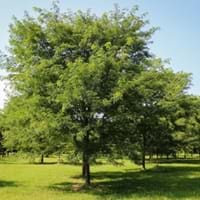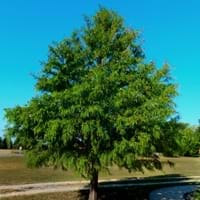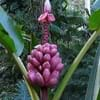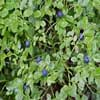Life Span
Annual
Perennial
Origin
China, Korea
Northeastern United States, Mid-Atlantic United States, Southeastern United States, North-Central United States, Central United States, South-Central United States
Types
Sophora japonica
Bald cypress is a cypress type
Habitat
Humid climates, Loamy soils, Low annual rainfall regions, Wet ground, Woods
Humid climates, Warmer regions
USDA Hardiness Zone
5-9
4-11
Sunset Zone
2a, 2b, 3a, 3b, 4, 5, 6, 7, 8, 9, 10, 11, 12, 13, 14, 15, 16, 17, 18, 19, 20, 21, 22, 23, 24
2a, 2b, 3a, 3b, 4, 5, 6, 7, 8, 9, 10, 12, 13, 14, 15, 16, 17, 18, 19, 20, 21, 22, 23, 24
Habit
Oval or Rounded
Pyramidal
Flower Color
White, Light Green
Green, Bronze, Brown
Flower Color Modifier
Bicolor
Bicolor
Fruit Color
Green
Green, Brown
Leaf Color in Spring
Dark Green
Green, Lime Green
Leaf Color in Summer
Dark Green
Green
Leaf Color in Fall
Yellow, Dark Green
Copper, Bronze
Leaf Color in Winter
Not Available
Not Available
Leaf Shape
Elliptic
Linear
Plant Season
Spring, Summer, Fall, Winter
Spring, Summer, Fall, Winter
Sunlight
Full Sun
Full Sun, Partial Sun, Partial shade
Type of Soil
Clay, Loam, Sand
Clay, Loam, Sand
The pH of Soil
Acidic, Neutral, Alkaline
Acidic, Neutral, Alkaline
Soil Drainage
Average
Average
Tolerances
Pollution, Drought, Soil Compaction
Wet Site, Pollution, Soil Compaction
Where to Plant?
Ground
Ground
How to Plant?
Seedlings, Transplanting
Seedlings
Plant Maintenance
Medium
Medium
Watering Requirements
occasional watering once established, Requires watering in the growing season
Keep plant submerged in water
In Summer
Less Watering
Lots of watering
In Spring
Less Watering
Moderate
In Winter
Drought Tolerant
Average Water
Soil pH
Acidic, Neutral, Alkaline
Acidic, Neutral, Alkaline
Soil Type
Clay, Loam, Sand
Clay, Loam, Sand
Soil Drainage Capacity
Average
Average
Sun Exposure
Full Sun
Full Sun, Partial Sun, Partial shade
Pruning
Prune when young, Remove dead branches
Prune in late winter, Remove damaged leaves, Remove shoots
Fertilizers
All-Purpose Liquid Fertilizer
All-Purpose Liquid Fertilizer
Pests and Diseases
Leaf spot, Red blotch, Woodpecker feeding
Beetles, Blight, Chlorosis, Drought, Mites
Plant Tolerance
Drought, Dry soil, Soil Compaction
Drought
Flowers
Showy
Insignificant
Flower Petal Number
Single
Not Available
Foliage Texture
Medium
Fine
Foliage Sheen
Matte
Matte
Attracts
Bees, Hummingbirds, Woodpeckers
Not Available
Allergy
Eczema, Nausea, Swelling in the face
Asthma
Aesthetic Uses
Bouquets, Landscape Designing, Showy Purposes
Beautification
Beauty Benefits
Nourishes scalp, Restores Hair Colour, Stops hair loss
Not Available
Environmental Uses
Air purification, Erosion control, Forms dense stands, Shadow Tree
Air purification
Medicinal Uses
Diuretic, Fever, Muscle Pain, Vomiting
Acne, Skin Disorders, Wounds
Part of Plant Used
Bark, Leaves
Leaves, Stem
Other Uses
Used as a laxative, Used as firewood, Used as Ornamental plant, Used in construction
Application in Handicrafts, Used in construction, Used in Furniture
Used As Indoor Plant
No
No
Used As Outdoor Plant
Yes
Yes
Garden Design
Shade Trees, Street Trees, Topiary / Bonsai / Espalier
Bog Garden, Feature Plant, Screening / Wind Break, Shade Trees, Street Trees
Botanical Name
SOPHORA japonica
TAXODIUM distichum
Common Name
Chinese Scholartree, Japanese Pagoda
Bald Cypress
In Hindi
Gobur champ
bald cypress
In German
Japanischer Schnurbaum
kahlen Zypresse
In French
Styphnolobium japonicum
cyprès chauve
In Spanish
Styphnolobium japonicum
ciprés calvo
In Greek
Styphnolobium japonicum
φαλακρό κυπαρίσσι
In Portuguese
Styphnolobium japonicum
calvo cipreste
In Polish
Perełkowiec japoński
Łysy drzewa cyprysowego
In Latin
Styphnolobium japonicum
dilata calvitium cypressus
Phylum
Angiosperms
Coniferophyta
Class
Magnoliopsida
Pinopsida
Family
Fabaceae
Cupressaceae
Genus
Styphnolobium
Taxodium
Clade
Angiosperms, Eudicots, Rosids
Not Available
Tribe
Sophoreae
Not Available
Subfamily
Faboideae
Not Available
Number of Species
Not Available
Not Available
Season and Care of Japanese Pagoda and Bald Cypress
Season and care of Japanese Pagoda and Bald Cypress is important to know. While considering everything about Japanese Pagoda and Bald Cypress Care, growing season is an essential factor. Japanese Pagoda season is Spring, Summer, Fall and Winter and Bald Cypress season is Spring, Summer, Fall and Winter. The type of soil for Japanese Pagoda is Clay, Loam, Sand and for Bald Cypress is Clay, Loam, Sand while the PH of soil for Japanese Pagoda is Acidic, Neutral, Alkaline and for Bald Cypress is Acidic, Neutral, Alkaline.
Japanese Pagoda and Bald Cypress Physical Information
Japanese Pagoda and Bald Cypress physical information is very important for comparison. Japanese Pagoda height is 1,220.00 cm and width 1,220.00 cm whereas Bald Cypress height is 2,130.00 cm and width 610.00 cm. The color specification of Japanese Pagoda and Bald Cypress are as follows:
Japanese Pagoda flower color: White and Light Green
Japanese Pagoda leaf color: Dark Green
Bald Cypress flower color: Green, Bronze and Brown
- Bald Cypress leaf color: Green and Lime Green
Care of Japanese Pagoda and Bald Cypress
Care of Japanese Pagoda and Bald Cypress include pruning, fertilizers, watering etc. Japanese Pagoda pruning is done Prune when young and Remove dead branches and Bald Cypress pruning is done Prune in late winter, Remove damaged leaves and Remove shoots. In summer Japanese Pagoda needs Less Watering and in winter, it needs Drought Tolerant. Whereas, in summer Bald Cypress needs Lots of watering and in winter, it needs Average Water.





